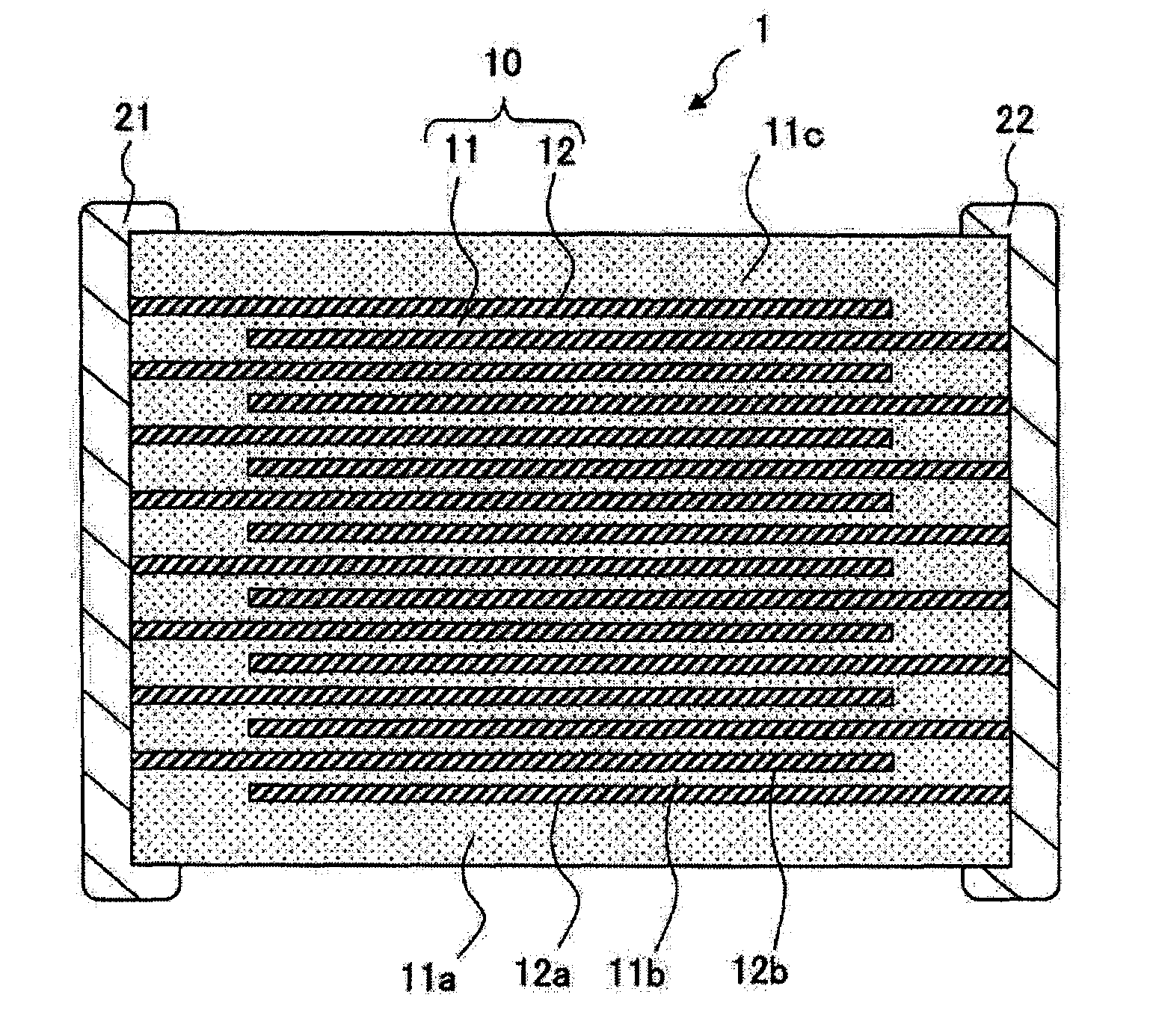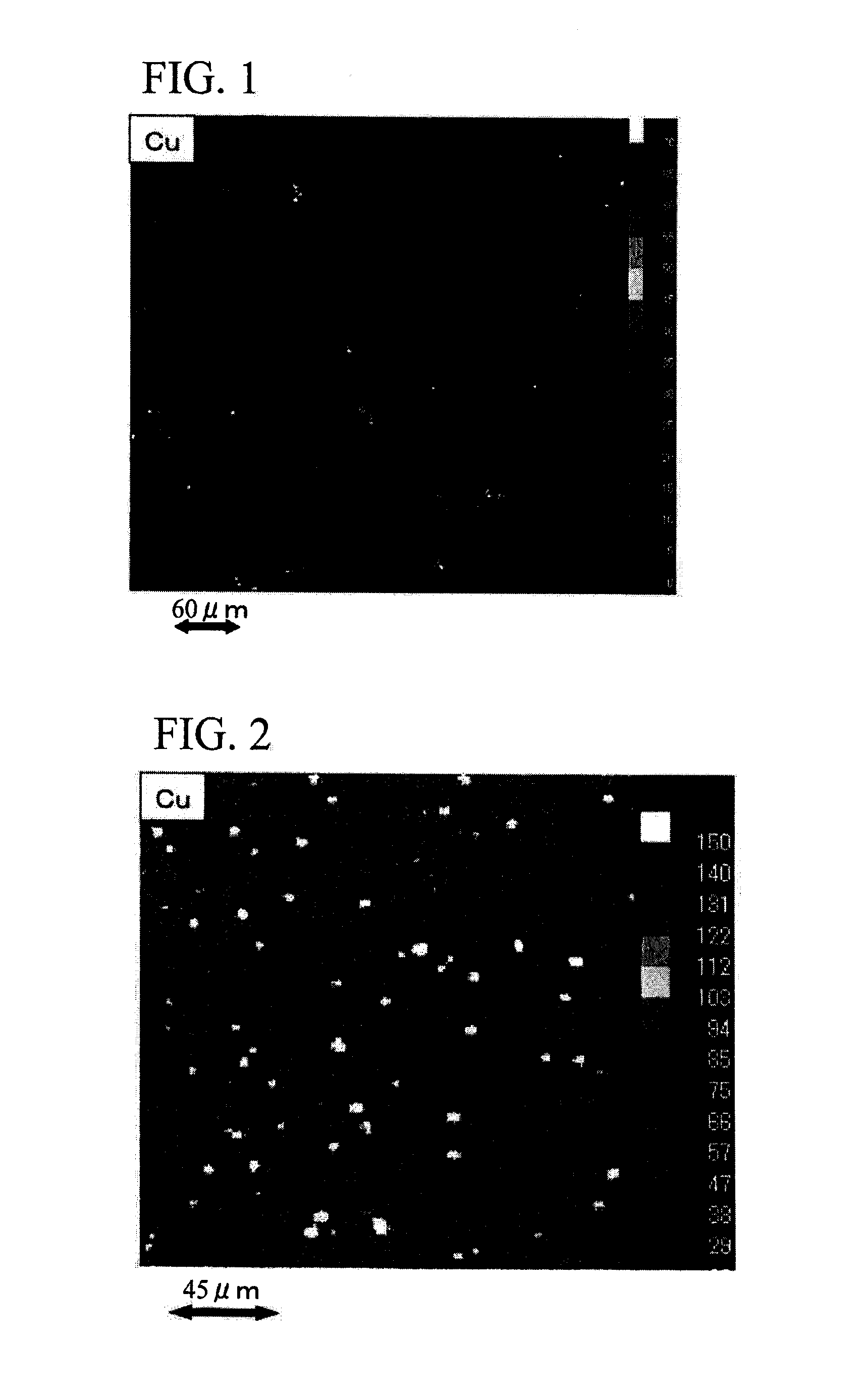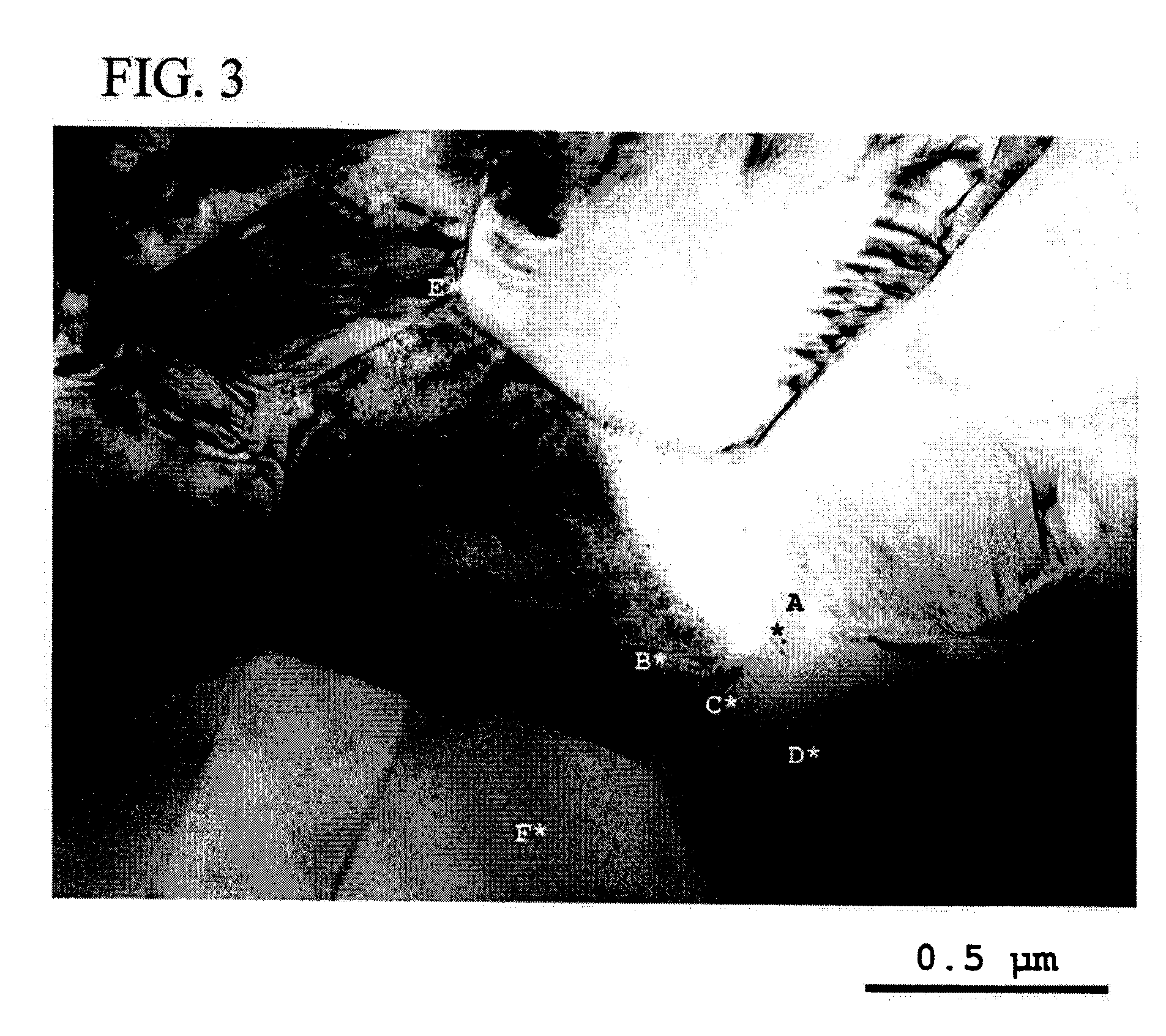Piezoelectric ceramic composition and laminated piezoelectric element
- Summary
- Abstract
- Description
- Claims
- Application Information
AI Technical Summary
Benefits of technology
Problems solved by technology
Method used
Image
Examples
example 1
[0099]In the present example, effects of Ag and Cu were investigated by adding Ag as Ag2O and Cu as Cu2O so as to give the contents shown in FIG. 6 in relation to the following main constituent.
[0100]Main constituent:[0101](Pb0.965Sr0.03)[(Zn1 / 3Nb2 / 3)0.02TiO0.46Zr0.52]O3
[0102]Each of the piezoelectric ceramic composition samples shown in FIG. 6 was prepared as follows. First, as the raw materials for the main constituent, a PbO powder, a SrCO3 powder, a ZnO powder, a Nb2O5 powder, a TiO2 powder and a ZrO2 powder were prepared, and were weighed out so as to give the composition of the above-mentioned main constituent. Additionally, a Ag2O powder as Ag and a Cu2O powder as Cu were prepared, and any one of these powders was added to the base composition of the main constituent so as to give the content (first additive content) shown in FIG. 6. Further, a Ta2O5 (a second additive) powder was added in a content of 0.2% by mass in relation to the base composition of the main constituent....
example 2
[0108]Each of the samples shown in FIG. 7 was prepared in the same manner (sintering in reductive atmosphere for Cu2O; sintering in air for Ag2O and for the cases without any first additive; and sintering temperature: 950° C.) as in Example 1 except that the raw materials were prepared so as to give the value of “a” and the content of the first additive shown in FIG. 7 in relation to the following main constituent. The samples thus obtained were subjected to the sintered body density measurement in the same manner as in Example 1. The results thus obtained are shown in FIG. 7.
[0109]Main constituent:[0110](Pba-0.03Sr0.03)[(Zn1 / 3Nb2 / 3)0.02Ti0.46Zr0.52]O3
[0111]Second additive:[0112]Ta2O5 (0.2% by mass)
[0113]As shown in FIG. 7, with the values of a falling within a range from 0.96 to 1.03, dense sintered bodies were able to be obtained.
example 3
[0114]Each of the samples shown in FIG. 8 was prepared in the same manner (sintering in reductive atmosphere for Cu2O; sintering in air for Ag2O and for the cases without any first additive; and sintering temperature: 950° C.) as in Example 1 except that the raw materials were prepared so as to give the value of b and the content of the first additive shown in FIG. 8 in relation to the following main constituent. The samples thus obtained were subjected to the sintered body density measurement in the same manner as in Example 1. The results thus obtained are shown in FIG. 8.
[0115]Main constituent:[0116](Pb0.995-bSrb)[(Zn1 / 3Nb2 / 3)0.02Ti0.46Zr0.52]O3
[0117]Second additive:[0118]Ta2O5 (0.2% by mass)
[0119]As shown in FIG. 8, with the values of b falling within a range from 0 to 0.1, dense sintered bodies were able to be obtained.
PUM
| Property | Measurement | Unit |
|---|---|---|
| Electric field strength | aaaaa | aaaaa |
| Length | aaaaa | aaaaa |
| Length | aaaaa | aaaaa |
Abstract
Description
Claims
Application Information
 Login to View More
Login to View More - R&D
- Intellectual Property
- Life Sciences
- Materials
- Tech Scout
- Unparalleled Data Quality
- Higher Quality Content
- 60% Fewer Hallucinations
Browse by: Latest US Patents, China's latest patents, Technical Efficacy Thesaurus, Application Domain, Technology Topic, Popular Technical Reports.
© 2025 PatSnap. All rights reserved.Legal|Privacy policy|Modern Slavery Act Transparency Statement|Sitemap|About US| Contact US: help@patsnap.com



